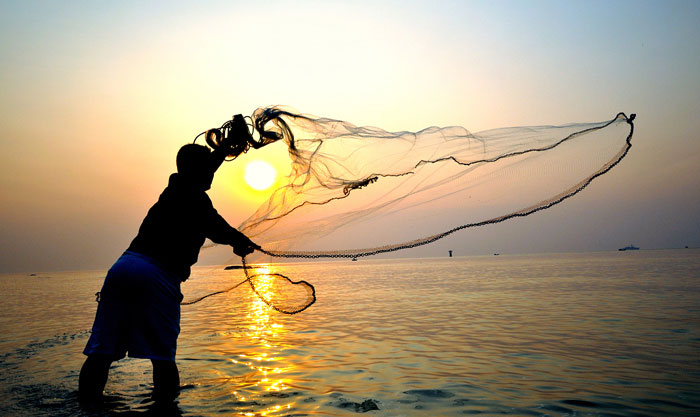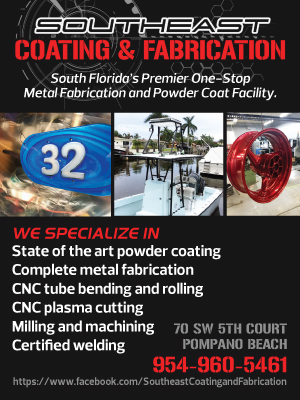
There is always a big advantage to using live bait or fresh caught cut bait when fishing. All things being equal, the fish will find it hard to resist a zippy live bait swimming around their face. They will also prefer a moist, oily piece of meat lying on the ocean floor versus a thawed out, ice encrusted presentation. Fish see, smell and feel the vibrations of their prey. Why not give them the best presentation and have more success during your fishing outing? I always prefer a live bait or fresh dead presentation for my bottom fishing. The little extra effort put in harvesting live or fresh bait often pays off when I finally get to my favorite fishing spots.
I often use a cast net by land and by skiff to accumulate a bucket full of bait. I enjoy the work and the hunt to get my own bait because I reason that if the fish won’t hit my live presentation they will be tough to get on an artificial presentation. I would like to share a little information about cast nets that may help you make the right purchase and get the tool that best suits your needs.
Cast nets come in different overall sizes and are made with different size mesh (holes) that are designed to catch different sized and shaped bait. They are weighted with lead that makes them sink at different rates to match bait harvesting in different depths. Some nets have more plies and are made with better quality materials. They are much easier to open because they are supple and very pliable. You don’t have to break the bank to get a versatile cast net but you can get a quality net if you fish a lot and are willing to spend a little more.
Some of the target bait that could be around are listed below with some suggested mesh sizes.
Glass Minnows – Many anglers love catching their own glass minnow to use as chum or to use as bait when targeting snappers on the anchor. These anglers will make their own chum recipes and catch a boat load of fish. A common net size for this type of bait 3/16” or 1/4” mesh.
Pilchard / Threadfins – These are common springtime and summer bait. Known as “whitebait” on the west coast of Florida, everything eats these! Lively and flashy, they can be freelined or pinned on a bottom rig. Hold on, they will get inhaled by tarpon, snook, jacks and cobia to name a few species. I would recommend a 3/8” mesh for this type of bait that are 3-6” inch in length.
Ballyhoo – If the ballyhoo is around and you draw them in with a chum slick you can harvest them with a nice cast of your 1/2” mesh cast net. An old trick is to chum up the hoos and then throw in a handful of chum with a handful of sand mixed in just before you cast your net on them. The sand will cloud up the water just enough to conceal the net coming at the bait. Be “one and done!”
Mullet – Spring time mullet will be around on the beaches and will make their way into the ICW. Silver mullet are very fast and spook easy. They also have smaller heads than black mullet and will get gilled with larger mesh “mullet” nets. I would recommend going a little smaller on the mesh size but still get a net with at least 1.4 lb per foot on the lead line. A good mesh size would be 3/4” mesh when targeting silver mullet.
Don’t be intimidated at the process of cast netting. Catching your own bait is fun, saves you a ton of money in the long run and will result in you catching a lot more fish.
Josh Manso
aka “King of the Pompano Pier”
T and R Tackle Shop
(954) 776-1055
www.tandrtackleshop.com
facebook.com/tandrtackle

